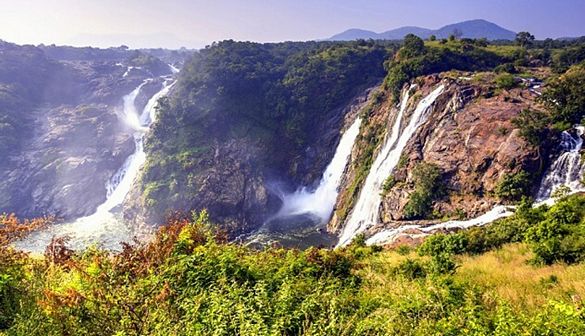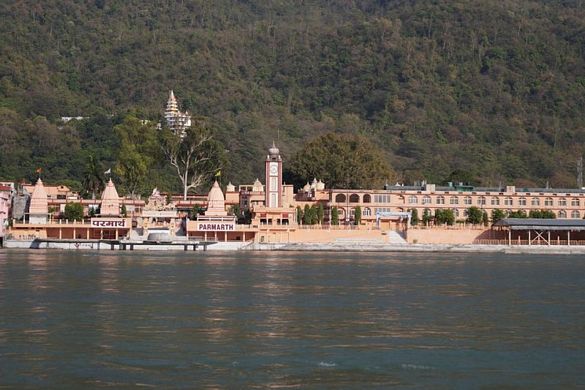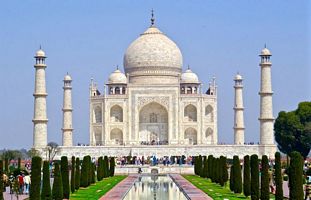The experience of white water rafting is unique. It is not only a game, but it is also a way of direct contact with nature and experiencing it. The people involved navigate their rafts in the fast and furious currents of the river. This sport not only demands physical strength but also places great emphasis on mental fortitude and teamwork. Selection of suitable rivers for rafting is important. The water flow in these rivers is fast, and there are many types of rapids and obstacles. Rapids are graded based on their difficulty, which can range from I to VI, with I being the easiest and VI being the hardest. Newcomers usually start on lower difficulty rapids.
While rafting, every person is required to wear proper safety equipment. This includes a life jacket, helmet, and special shoes. Apart from this, it is also important to follow training and safety instructions before rafting. Teamwork is very important while rafting. To control the raft, all members have to work in coordination and coordination. The team leader or guide usually stands at the back of the raft and gives necessary instructions.
Rafting is not only an exciting sport, but it is also a wonderful way to establish a closer connection with nature. This game makes people experience the amazing views of nature and its immense power. In India, there are many famous destinations for rafting, such as Rishikesh, which is considered a major center for rafting. The Ganga river here is famous for its beautiful scenery and challenging rapids. Apart from this, Indus River of Ladakh and Kali River of Karnataka are also popular destinations for rafting.
White water rafting is an experience that not only challenges physical and mental limits, but it can also be a journey of self-discovery. This sport gives people a chance to go beyond their normal limits and recognize the hidden powers within themselves.
India offers a variety of exhilarating white water rafting destinations, each with its unique charm and level of difficulty. Here are some of the best places for white water rafting in India:
Indus River, Ladakh: Known for its scenic beauty and cultural richness, the Indus River in Ladakh offers rafting experiences for both beginners and experienced rafters with Grade I and II rapids. The best time for rafting here is from July to September.
Spiti River, Himachal Pradesh: Offering a blend of moderate to challenging rapids (Grade I to IV), the Spiti River in Himachal Pradesh is an offbeat destination for adventure seekers. The best time for rafting here depends on the water level.
Teesta River, Sikkim: This river is renowned for its fast-flowing rapids and stunning landscapes. Suitable for both beginners and experienced rafters, it has Grade II to IV rapids. The best time for rafting is not specified.
Dandeli, Karnataka: Dandeli on the Kali River is a popular spot for white water rafting in South India, offering Grade II to III rapids over a 12 km stretch. The best time for rafting is from November to June.
Beas River, Kullu-Manali: Offering a scenic and exhilarating experience, the Beas river in Kullu Manali has rapids ranging from Grade I to IV over a 14 km stretch. The best time for rafting is from March to July.
Lohit River, Arunachal Pradesh: A lesser-known spot with moderate to Grade IV rapids, the Lohit River provides scenic views of alpine forests. The best time to visit is from November to March.
Kameng River: With rapids ranging from moderate to Grade IV, Kameng River offers an exhilarating rafting experience over a 25 km stretch. The best time for rafting is from April to early June.
Zanskar River, Ladakh: Known for its challenging rapids (Grade III and IV) and stunning landscapes, Zanskar River is a favorite among expert rafters. The rafting season here is typically during the summer months.
Barapole, Coorg: Offering one of South India’s most challenging rafting adventures with multiple rapids, Barapole in Coorg is best visited from June to September.
Kolad, Maharashtra: Unique for being operational throughout the year, Kolad offers rafting at Grade 2 and 3 levels on the Kundalika River, with the best season being the monsoon months.

Arunachal Pradesh
Arunachal Pradesh is a state located in northeastern India and is known for its rugged terrain and rich biodiversity. The state"s capital is Itanagar, and it is home to several ethnic groups, including the Monpa, Adi, and Nyishi. The state"s economy is driven by agriculture and tourism, with apple farming being the primary crop grown. The state is also known for its rich cultural heritage, with several indigenous festivals being celebrated throughout the year. Arunachal Pradesh has several notable tourist destinations, including the Tawang Monastery, the Namdapha National Park, and the Ziro Valley.

Himachal Pradesh
Himachal Pradesh is a state in northern India, bordered by Jammu and Kashmir, Punjab, Haryana, Uttarakhand, and Tibet. Its capital city is Shimla, which was once the summer capital of the British Raj. Himachal Pradesh is known for its scenic beauty and attracts a large number of tourists every year. The state has a predominantly rural population, and agriculture is the primary source of livelihood. However, the state government has been promoting tourism and industrialization to boost the economy.

Karnataka
Karnataka is a state in southern India, bordered by Goa, Maharashtra, Andhra Pradesh, Tamil Nadu, and Kerala. Its capital city is Bengaluru, which is also known as the Silicon Valley of India due to its thriving IT industry. Karnataka has a rich cultural heritage and is known for its historical monuments, temples, and beaches. Kannada is the official language of the state, but several other languages are also spoken. Agriculture is an essential source of livelihood for people in rural areas, while industries such as software, biotechnology, and textiles drive the economy in urban areas.

Sikkim
Located in the Himalayas, Sikkim is a small and scenic state known for its natural beauty and unique culture. It is home to several Buddhist monasteries and is known for its vibrant festivals and traditions. Agriculture is the main source of income, with cardamom, ginger, and oranges being the major crops. The state is also a major producer of hydropower and is known for its eco-tourism initiatives.

Uttarakhand
Uttarakhand is a state located in the northern part of India. It was formed on 9 November 2000 as the 27th state of India. The state is known for its scenic beauty and is often referred to as the "Land of the Gods" due to the presence of numerous Hindu temples and pilgrimage centers. The state has a total area of 53,483 square kilometers and is bordered by Tibet in the north, Nepal in the east, and the Indian states of Uttar Pradesh to the south and Himachal Pradesh to the west. Dehradun is the capital of Uttarakhand.

Ladakh
Ladakh is a union territory located in the northernmost region of India. It is known for its breathtaking natural beauty, including the Himalayan mountain range and the high-altitude desert of the Tibetan Plateau. The region is sparsely populated and home to a mix of cultural and religious traditions, including Buddhism, Islam, and Hinduism.Ladakh"s economy is largely driven by tourism, with visitors coming to explore the region"s stunning natural landscapes and unique cultural heritage. The union territory is also home to several important cultural and historical landmarks, including the Leh Palace and the Hemis Monastery.

Maharashtra
Maharashtra is a state located in the western region of India. It is the second-most populous state in the country and home to the financial capital of Mumbai. Maharashtra is known for its rich history, diverse culture, and thriving film industry. The state has a mix of rural and urban areas, and its official language is Marathi.Maharashtra is one of the wealthiest states in India and has a diverse economy, with industries ranging from agriculture to information technology. The state is also home to several important cultural and historical landmarks, including the Ajanta and Ellora caves and the ancient city of Pune.
Top Stories
-

Discover Exciting Places to Visit in Agra, Uttar Pradesh - Your Ultimate Travel Guide
-

Explore Exciting Places to Visit in Mumbai, Maharashtra - Your Ultimate Travel Guide
-

Explore the Wonderful Places to Visit in Manali, Himachal Pradesh - Your Ultimate Guide!
-

Places to Visit in Solan Himachal Pradesh - Explore the Best Tourist Spots
-

Discover the Best Places to Visit in Kangra, Himachal Pradesh: A Traveler's Guide




